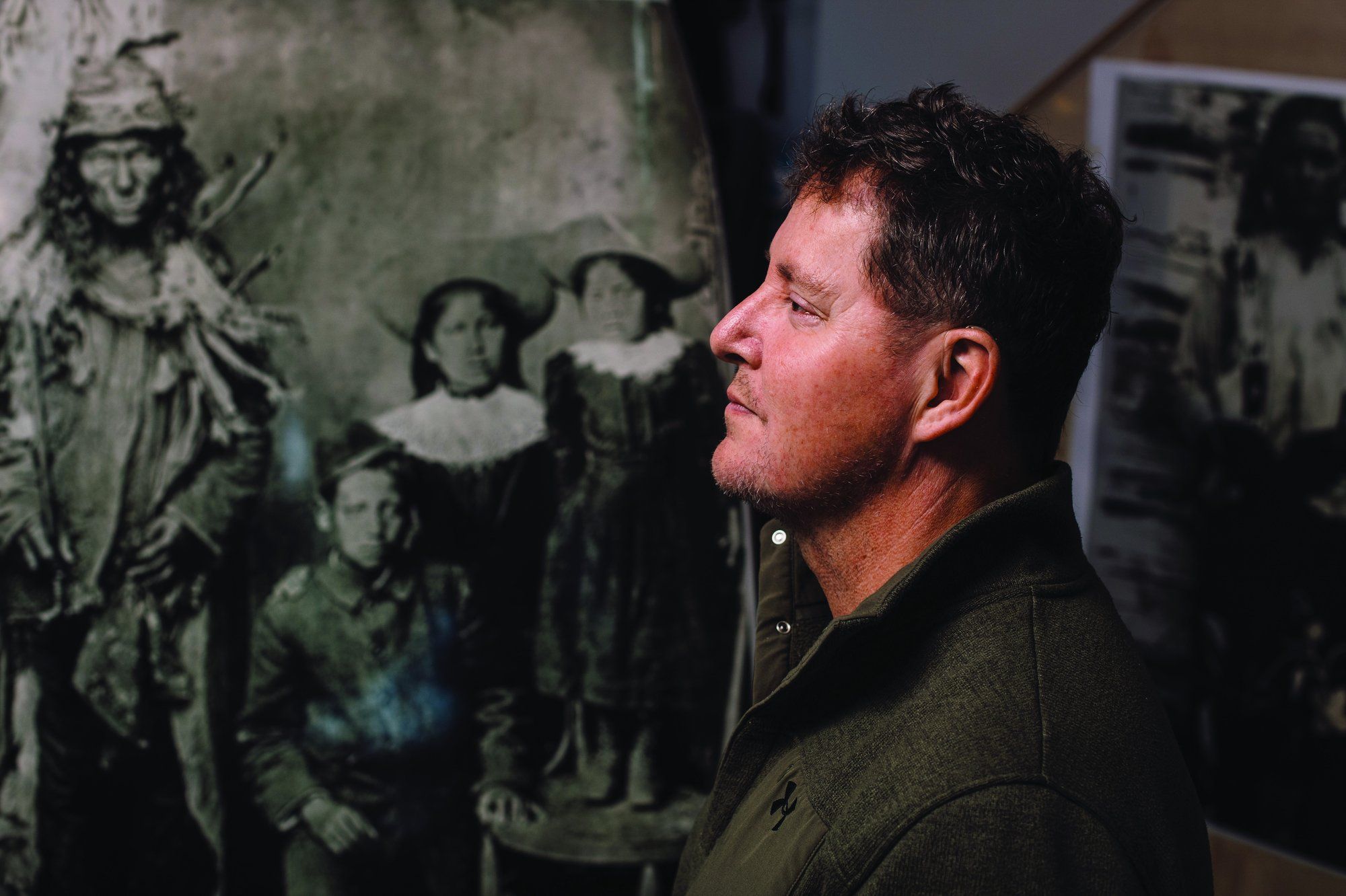The DNA Detective
RCMP officer Dean Lerat, a member of Cowessess First Nation in Saskatchewan, found many of his long-lost relatives using a DNA-testing kit. Now he helps others connect with their own families, fragmented by colonialism. The results tell the story of a whole nation.
Share
November 28, 2023
On St. Patrick’s day in 2016, Dean Lerat and his wife, Julie, went for dinner at Piper’s Pub in Antigonish, Nova Scotia. Amid the green-hued beer and slightly over-festive revellers—many celebrating their Irish roots—the Lerats found themselves chatting about their own family histories. Lerat, who’s tall with sandy-brown hair, exudes the do-gooder energy of a Boy Scout while maintaining the enviable posture of someone who’s spent decades perfecting a rigid salute. For 25 years, he’s donned the red regalia and stiff-brimmed hat of an RCMP officer. He’s also a Saulteaux member of Cowessess First Nation in southern Saskatchewan. Dean and Julie both had some Irish heritage, but he knew little about his. That night, the couple made a good-natured bet about whose blood ran greener.
Keen on a victory, Lerat turned to Ancestry.ca, a direct-to-consumer DNA-testing site that has customers spit into a tube in exchange for intel on any genetic relatives it has in its system. Within six weeks, Lerat received his results by email. He clicked on a link and was amazed by the number of hits he received. Not only was he 15 per cent Irish, but there, at his fingertips, were hundreds of biological family members—some he recognized and others more distant and unknown. Several were Lakota members of the Sioux confederacy in the United States.
Excited by the revelations, four months later, Lerat visited his mother, Joanne, at her home in Cowessess. She’d never known her biological father, and Lerat had come to help her put together an Ancestry kit of her own. Her dad, the results revealed, worked as a taxi driver in Regina. He died in 1998. Unexpectedly, Joanne also found a half-sister who lived in Regina, less than two hours away by car. In 2019, just before Christmas, the two sisters met for the first time. “They’re very similar—same height, eyebrows, smile,” says Lerat. “There was a lot of crying, then lots of laughter. It was like something out of a TV show.” The reunion galvanized something for Lerat: the power of DIY DNA tests to unite scattered families. Within his own circle, Lerat had plenty of friends and distant kin whose lineages were incomplete. There were many thousands of Indigenous survivors of Canada’s foster system and residential schools. The possibilities for reconnection seemed endless.
Lerat was looking for a way to occupy himself during the doldrums of COVID, so he offered his services to his mother’s cousin and an acquaintance, both in search of their biological fathers. Gradually, Lerat’s name began surfacing in Facebook groups of all kinds—for genealogy buffs, for Sixties Scoop survivors and for First Nations communities—as the go-to guy for family research. He receives roughly 10 social-media messages every week from people across the country looking to overturn lifetimes of shame and secrecy. “It snowballed,” he says. “I felt like these people needed my help to find their way home.” He’s started calling his project a “genetic roadmap” for his people. Less of a hobby and more of a mission. The kind of thing he could dedicate his life to.
Lerat was born in Broadview, Saskatchewan, 20 kilometres south of Cowessess, which was established in 1880 on the edge of Crooked Lake. His father died in a car accident when Lerat was just six months old, not long after his parents had married. Joanne struggled to parent as a young widow, so Lerat’s upbringing became a village effort. Rosalie, his paternal grandmother (or kookum in Cree) often took him to the woods, where they’d trap animals to skin for hides. His paternal grandfather, George, briefly served as chief of Cowessess. Lerat remembers him as unfailingly kind, a provider, a guy who could fix pretty much anything. “He provided comfort to the dying, the sick, the grieving,” says Lerat. “He was my hero.”
Those were happy years, but generational trauma cast a long shadow. Lerat remembers a lot of suicides in Cowessess growing up, many of them his cousins. Tragedy had touched Lerat’s elders, too. When his maternal grandmother, Misty Morningstar, was six, a truck drove through the reserve, picked her up and took her to a residential school. The exact details are hazy, but she’s shared what she can recall with Lerat: she thought she was going on a trip. She was beaten and her hair was chopped off. She ran away repeatedly. When RCMP officers inevitably returned her to the school, she refused to let them see her cry.
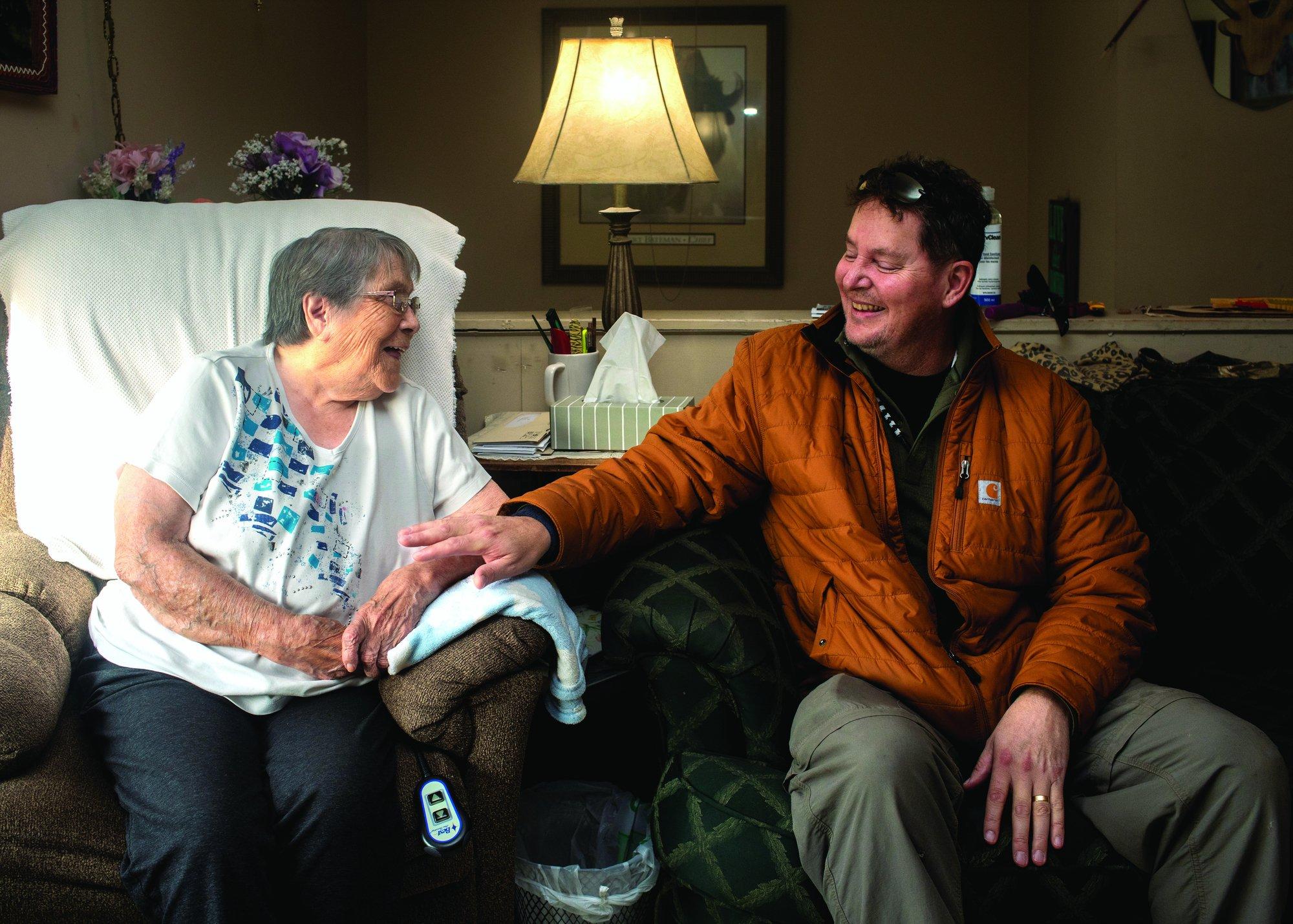
That kind of separation was a horrific yet commonplace feature of life for families like Lerat’s. Beginning in the 1860s, Canadian government agencies and churches regularly split up Indigenous families, spurred on by the racist mentality that Indigenous parents couldn’t be trusted to raise their own children. As part of a class-action settlement reached with the federal government in 2018, survivors of the Sixties Scoop are now entitled to reparations of $25,000 each, and grassroots initiatives, like an online mapping project by the Ottawa-based Sixties Scoop Network, are attempting to reconnect people to their rightful cultures. But whole communities remain scarred.
Lerat’s own fractured family history left him with a lifelong feeling of existing between worlds. As a kid, he was particularly close to his maternal great-grandmother Esther—Misty’s mother—who taught him to read. But she was also the product of a residential school, a dark time that disrupted her ability to bond. “I told her I loved her a thousand times and she never said it back,” Lerat says. He remembers Esther fiddling with her rosary beads on her deathbed, reciting prayers drilled into her by the nuns of her youth. “That conflict that must have been inside her all her life,” says Lerat. “I just call it survival.”
SIGN UP TO READ THE BEST OF MACLEAN’S:
Get our top stories sent directly to your inbox twice a week
In 1976, Lerat started school at Broadview elementary—“the white school”—partly at Esther’s urging. Even with his fair skin and light hair, he struggled to fit in. He picked fights, and his schoolmates picked fights right back. In 1988, at 17, Lerat landed at Athol Murray College of Notre Dame, a Catholic boarding school on the outskirts of Regina. He couldn’t shake off his shyness when it came to speaking to the white girls. He threw himself into hockey and football and excelled in his favourite subject: history.
Eventually, Lerat’s feelings of otherness transformed into a sense of duty. A few of his older cousins were officers in the RCMP, and in 1997, Lerat became one too, starting out in general duty in Saskatchewan the following year. “I joined in an effort to make a difference for my people,” he says. “To be a role model.” He met Julie, who’s now his wife, at basic training in Regina; they were paired together in formation. (“She stared at my backside for the first couple of months before we met,” he says, laughing.) The two married in 1998 and, four years later, transferred to Nova Scotia, where Julie grew up. There, Lerat worked with the homicide and major crimes divisions, tracking down leads for long-cold cases. The couple shuffled to Ottawa in 2005, when Lerat was promoted to a position in the national Aboriginal policing unit—now called National Indigenous Policing Services. Their daughter, Mary, was born there in 2007. (Lerat also had two children in a previous relationship: his daughter Teigan, who’s 29, and his son, Tynan, who died of complications from a swimming accident in 2000.)
Today, Lerat is stationed in Regina and holds the position of staff sergeant, heading up the Saskatchewan RCMP’s Indigenous Recruiting Unit. He harbours no illusions about the original mandate of the force—to impose the power of the government at the expense of Indigenous communities. Still, Lerat believes his current role allows him to bridge historical divides; he even wears his red serge when he attends powwows in Cowessess. “A lot of people don’t like the police because of things that have happened,” he says. “If I can somehow bring a little reconciliation to them, maybe I can change some attitudes.” Along the way, Lerat also picked up plenty of skills that apply to his passion project, like how to follow the smallest clues to the biggest revelations. “As a police officer, you try to exhaust every investigational avenue,” he says. “It’s the same way I track down families.”
Lerat is polite and humble—the kind of guy you might hope your sister would marry. In conversation, he reveals little of the dogged nature required by both his job and his side project, which has taken on a ferocious intensity in the last couple of years. On most Saturday mornings, Lerat sits down with a hot coffee and begins sketching out his maps of people previously lost to one another. To hone his DNA detective skills, Lerat has pored over newspaper archives and watched instructional YouTube videos on GedMatch, an online genealogy program. He’s consulted band lists and obituaries and conducted (and taped) hours-long interviews with his Nation’s elders. Lerat has also volunteered to work on Jane Doe projects that connect found remains with the identities of missing and murdered Indigenous women. He’s even tapped into his professional network, talking to police contacts across Canada about how they use DNA to solve unresolved cases.
Genetic coding requires a little know-how to decipher. When DNA matches are discovered through sites like Ancestry, 23andMe and MyHeritage, results typically come with an assigned number—measured in centimorgans—that increases depending on the closeness of a genetic connection. For example, a higher number is assigned to a parent-child match than one between two cousins. When helping someone find their family, Lerat typically collects the saliva sample in person, then sends it off for analysis. So far, he’s paid for the majority of the kits out of pocket.
Once the results are ready, Lerat explores the Ancestry database for any corresponding family trees and, through plenty of trial and error, painstakingly builds out branches until he hits the bull’s-eye—in most cases, a desired relative. Not all of Lerat’s work happens on paper or online, either. He’s been known to reach out to persons of interest by phone and even arranged for long-lost relatives to reunite at Cowessess’ annual powwow.
To date, Lerat has worked on more than 20 cases—most of which came to him via word-of-mouth referrals—and he often juggles four or five at once. His longest project, which involved paternity tests for a mother and her daughter, took three years and 10 DNA tests to conclude, not to mention countless hours of research conducted and miles driven. Sometimes Julie wakes at 3 a.m. and finds her husband still working by dim light. Her eyes tend to glaze over when Lerat starts divulging the nitty-gritty of his cases. She tells him to go to bed. “I can get carried away,” he says. “I get obsessed with a certain family, and it’s a constant battle to keep my priorities straight.” The night before he and I first spoke, Lerat admitted he was up until the early morning hours reviewing the case of an 84-year-old woman who never knew her biological father. He’d just stumbled across a living sister.
The DNA project has established Lerat as a resource for the people of Cowessess, especially, so many eager to fill in their ancestral blanks. “The relationship between Indigenous people and policing is complex, and Dean’s been able to strengthen that relationship because of who he is,” says Erica Beaudin, current chief of Cowessess and Lerat’s second cousin. “He’s deeply loved here for the work that he’s done. He’s never forgotten where he came from.”
It’s hard for Lerat to say no—each case has its own emotional lures, each person their own compelling reasons for seeking out where (and who) they come from. As we spoke about Lerat’s own family line, his voice kept cracking. For all his pragmatism and rigour, emotion is what drives his work. When he talks about the people he’s helped—and their parents or grandparents—it presses on his own familial wounds.
One of Lerat’s early cases involved a former foster child in Regina who was taken from his mother, a residential-school survivor, in the 1970s. The man reconnected with his mother later in life, but after enduring decades of trauma, she wasn’t at all prepared to connect him with the other relatives he was seeking. “He didn’t know his own kinship,” says Lerat, who later tracked down a few of the man’s cousins. “It was emotional, for both him and me.”
When Chief Beaudin, Lerat’s own cousin, got curious about her father’s line, Lerat dug up a series of matches that traced back to Lucy Maud Montgomery, Beaudin’s favourite author from childhood. Lerat’s DNA services were also solicited by Rachael Lerat, a very distant relative, who was surprised to find that her paternal relatives were much closer than she thought. Her long-time friends Waylon and Cory—who she’d met almost 30 years earlier—were actually her half-brothers. They shared the same father. “I was just sitting in my car with tears in my eyes, overwhelmed with happiness,” she says. “I was like, ‘Yes, thank god it’s Cory and Waylon!’ ”
Missing or unidentified parents loom large in Lerat’s work. June LaVallee was eight years old when her white mother took her to Lethbridge for a picnic and explained that June couldn’t live with her anymore. LaVallee, now 71, still remembers the back-to-back shocks: her mother revealed that the man LaVallee knew to be her father was actually her stepfather, not a blood relative. And he no longer wanted “a native” in the house, even if that “native” had been a daughter to him. “She said my biological father was Métis,” LaVallee recalls, “and I said, ‘What’s that?’ ” LaVallee’s mother surrendered her to child-welfare authorities the next day.
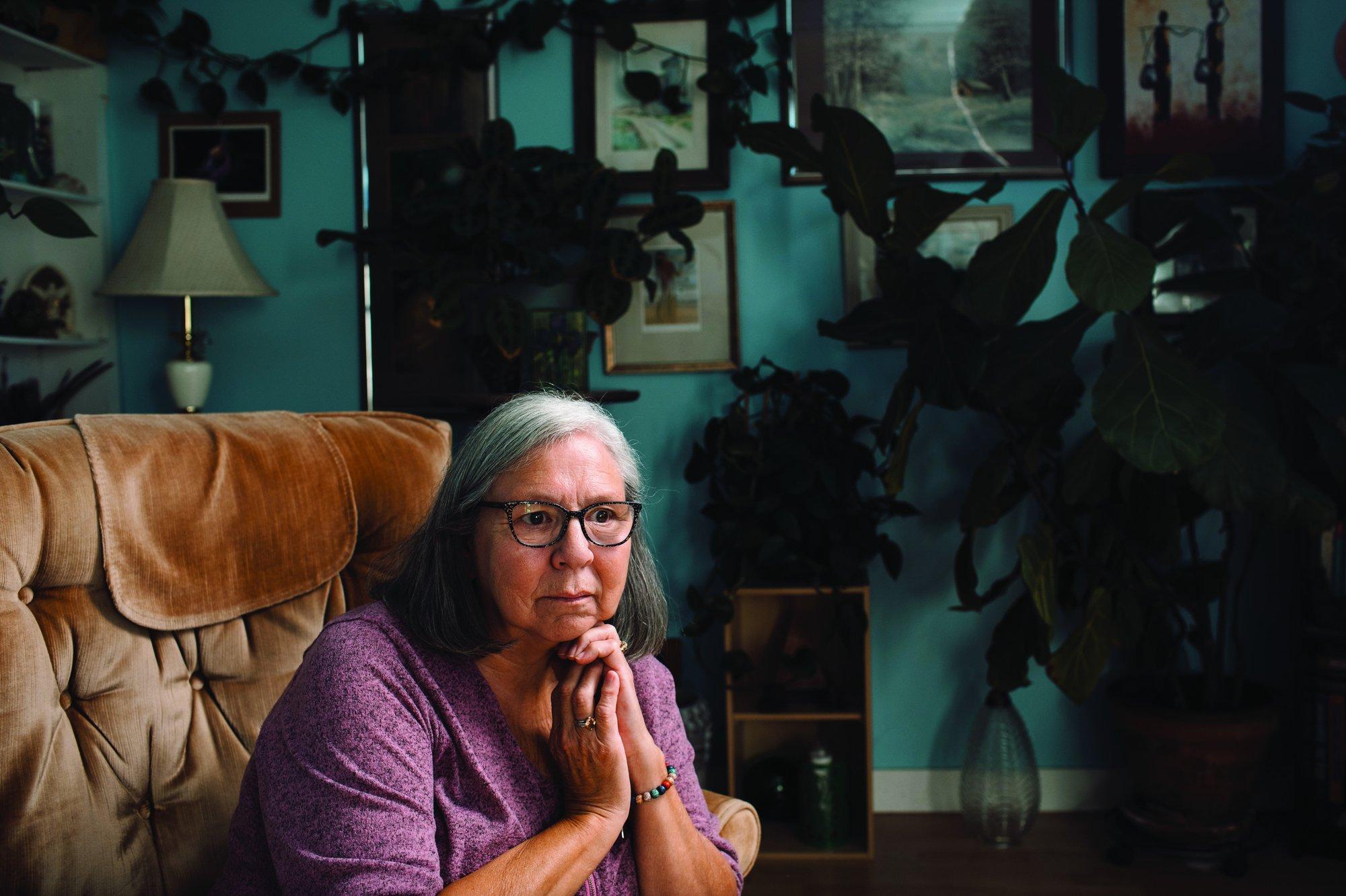
Over the next few years, LaVallee was shuffled around miserable foster situations, including one where she was given the nickname “little squaw.” She eventually landed with a white family in Stavely, Alberta, who had two other foster kids and encouraged LaVallee to embrace her Indigenous ancestry. “I had a good life,” she says. Still, LaVallee couldn’t ignore the tug of her roots. When she was 16, a social worker told LaVallee’s foster mother that her birth mother had looked for her, but the agency considered the relationship permanently severed. “Back then, once you gave up a child, the door was closed completely,” LaVallee says. “I think my mom regretted giving me up.” LaVallee’s mother died of cancer in Calgary in 1984; at the time, LaVallee was also living in the city, unaware that her mom was close by.
It wasn’t until her 40s, when LaVallee sent away for new copies of her short- and long-form birth certificates to replace an old version that was falling apart, that she learned her biological father’s name: Peter. Her ancestry explorations stalled for almost 20 years afterwards, but when at-home DNA kits exploded in popularity in the late 2010s, LaVallee saw an opportunity. She sent in an Ancestry kit and received several hits for near and distant relations. She didn’t know where to start.
In 2021, Lerat contacted her out of the blue—LaVallee’s Ancestry bio had been flagged in the database as a likely relative. He offered to help find more of hers. “All she had was a couple bits and pieces of her family tree,” says Lerat of LaVallee’s puzzle. “She didn’t know how she connected to everybody.” Lerat soon reached out to her with a question: did you know you have a sister? LaVallee’s paternal half-sister, Tess, had been living in Ontario and had just recently died. Lerat passed along the website for the funeral announcement so LaVallee could see her sister—for the first and last time. “I was hoping,” she says, “but I didn’t even look like her.”
With Lerat’s help, LaVallee has since found plenty of living kin, including a great-niece, who have helped shade in the details of her parents’ lives. LaVallee knows it’s impossible to wind back the clock, but she still feels like she got what she wanted out of the process. “I have three boys, but it’s not the same as knowing your mom and dad,” she says. Her next priority is finding and visiting her father’s grave. “Just to say, ‘Hi, I’m here,’ you know?”
Lee Gaddie-Anderson, who owns a house-cleaning business in Qu’Appelle, just east of Regina, got a call from Lerat after her daughter did a DNA test via Ancestry in 2019; it turned out that Gaddie-Anderson and Lerat were second cousins. The two grew close, and Lerat now visits her for weekly catch-up sessions at her home. After Lerat processed her DNA test in 2020, Gaddie-Anderson learned—at the age of 58—that the man she’d always thought was her biological father, wasn’t. “When you start doing these tests, you open one door to try to solve something, then five more doors open,” Lerat says. Gaddie-Anderson’s test also unlocked dozens of other potential relatives, including two half-brothers and a half-sister. (Another half-brother had already died.) All of them live in the Regina area, but Gaddie-Anderson hasn’t met them yet. “I think we’re all a little nervous,” she says. “But we’re getting there.”
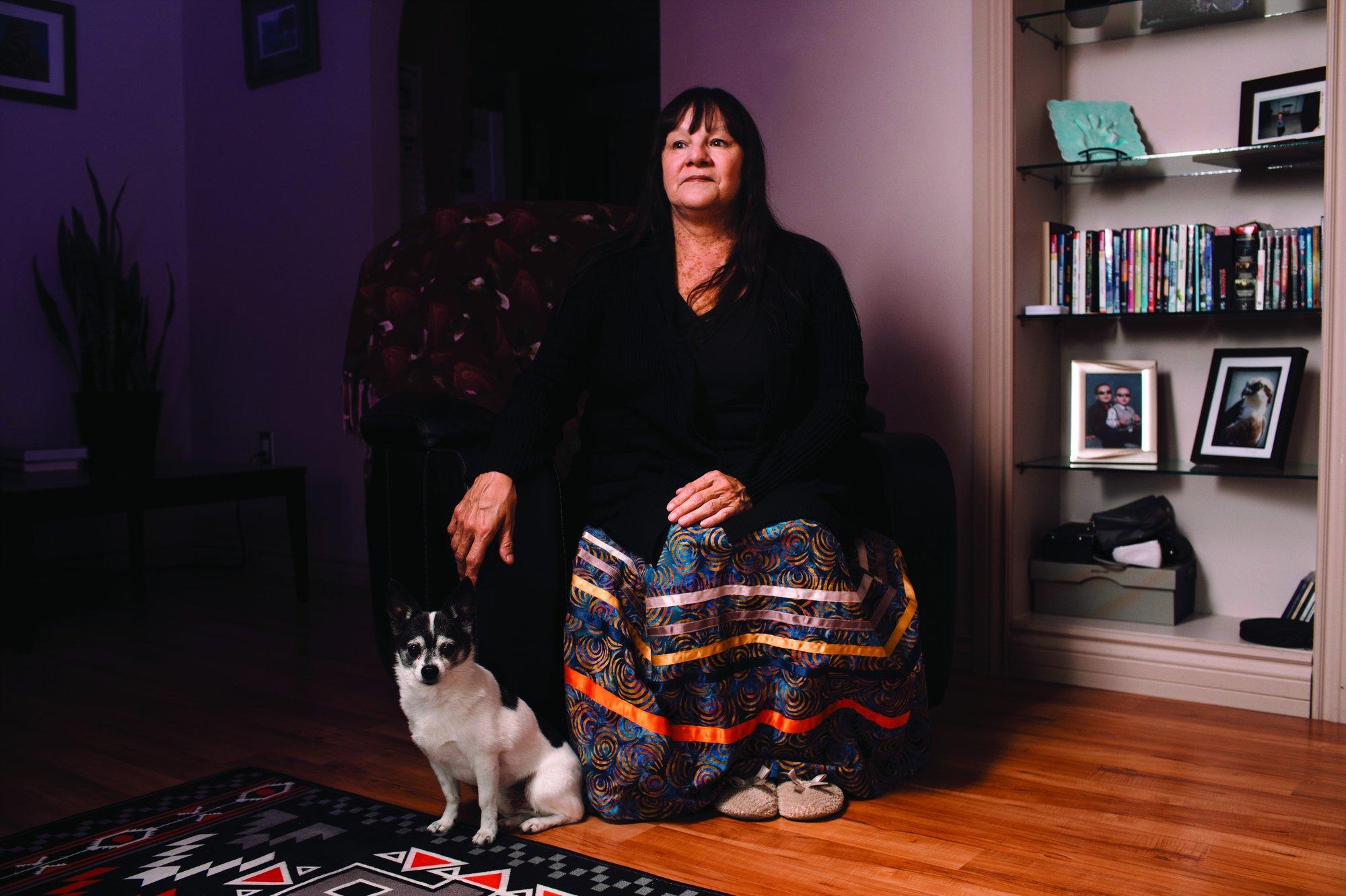
Gaddie-Anderson’s burgeoning friendship with Lerat produced yet another bombshell: his grandmother Misty divulged that Gaddie-Anderson’s mother had been in a residential school—the same one Misty was sent to. Gaddie-Anderson soon spoke with her uncle, who confirmed the news. He also vaguely alluded to “something bad” happening to Gaddie-Anderson’s mother, something that coincided with a priest’s departure from the school. It was easy enough for Gaddie-Anderson to fill in the gaps. “My uncle stopped dead after he realized what he had said,” she says. “I didn’t pursue it further. I could see the hurt in his eyes.”
After that, pieces of Gaddie-Anderson’s own past began clicking into place. Her childhood had been characterized by instability. Her mother, neither nurturing nor affectionate, abused alcohol as a coping mechanism. She developed dementia when Gaddie-Anderson was just 14, and her deterioration was painful and prolonged. They never got to have the kinds of conversations parents and children need to have as adults to understand one another.
In addition to revealing the darker contours of Gaddie-Anderson’s family tree, Lerat’s work has shed a lot of light. He unearthed details of Gaddie-Anderson’s paternal grandfather, Paul Acoose, who was inducted into Saskatchewan’s Sports Hall of Fame for long-distance running in 1983. She was also proud to learn that her biological father—not the man she called “Dad”—was part Cree. “I’m more Indigenous than I thought,” she says.
Gaddie-Anderson had long since turned away from her Catholic upbringing, and this recent wave of ancestry developments prompted her to reconnect with Indigenous rituals. In the last couple of years, Gaddie-Anderson has started attending powwows again; before 2021, she hadn’t been to one since she was a teenager. In some ways, she feels like she’s restoring the spirituality that was stolen from her mother. “I hope I gave her roots, her bloodlines, more family to love,” Lerat says. “Something that she can pass down to her kids and grandkids.”
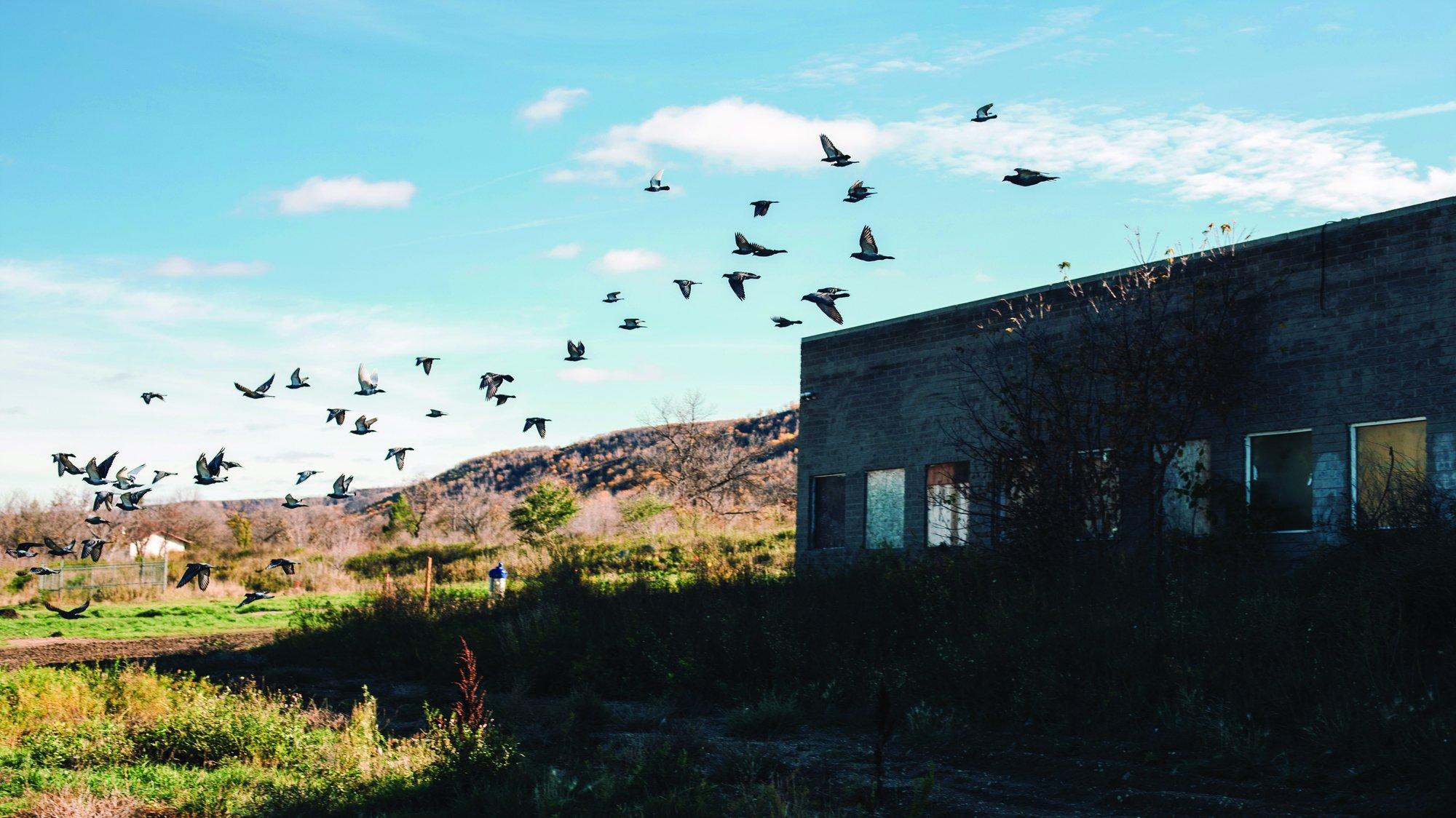
This past August, Lerat invited several people he’s helped with his genealogy work to meet up with their newfound relatives at Cowessess’ annual powwow. For three days, they enjoyed large communal breakfasts and dances performed in the spirit of healing. For his community-building efforts, Lerat received an eagle fan. His family—some old, some new—celebrated with him as he cried.
Lerat estimates that there are now 15,000 names on his family tree alone. His line is just one part of a much more expansive task that may very well take his whole life to complete: a family tree that spans all of Treaty 4 territory in southern Saskatchewan, encompassing members of the Cree, Lakota, Nakota and Saulteaux nations. Lately, the project has morphed into a total preoccupation; Lerat even dreams about his cases at night. Sometimes, he needs a break to get grounded in the present. “I’ll go for a run, build something or take a walk with Julie and Mary,” he says. “Just to do something together.”
READ: My name is Joseph Boyden
Lerat hopes his work will act as an anchor for Indigenous children. Eventually, the results could help to link nameless children in unmarked graves to living family lines. He’s also hoping to offer identity to the next generation, perhaps saving them from misguided bonding efforts, like gangs, and the confusion that marked his early years. At a get-together organized by the Cowessess residential school survivor group, held in Cowessess this past summer, Lerat set up a small booth, lined with genealogy documents from his office. He shared census information about various tribes and a list of every family surname in his nation with visitors. His station was especially popular among teenagers. “They were saying, ‘I’m Cree!’ or, ‘I’m Saulteaux!’ Then they’d look at each other and go, ‘Oh, cool!’
It’s unlikely that the details of Lerat’s database will be made public any time soon. He made a deal with participating Elders from Cowessess and Treaty 4 that he’d keep the tree’s contents private to prevent people from being retraumatized and protect families from news they may not yet be prepared to face. Lerat is the only person in possession of the Ancestry account password.“When I pass on to the spirit world,” he says, “whoever I pass this along to can be a gatekeeper, and continue to give our people the history of who they belong to.” Until then, he’ll keep chipping away at his nation’s mysteries, just as all of its great healers did. His aunt recently gave him a collection of interviews with surviving medicine men—many from Cowessess—and he plans to spend his winter looking even further back in time.
LaVallee, on the other hand, is moving forward. In 1970, when she was living in Calgary in her late teens, she gave birth to a baby boy. A social worker told her she couldn’t keep him, that she could never be the kind of mother he needed. LaVallee remembers sneaking out of her hospital room to catch a quick glimpse of her son, of his dark hair and pale skin, before he was whisked away to another family. She spent years searching for him, posting on every adoption database she could find, every trail running cold. It wasn’t until 2020, when she uploaded her DNA to 23andMe, that she got a hit: Audrey from California, the daughter of the baby LaVallee was forced to give up. “I sent her a message saying, ‘Apparently I’m your grandmother,’ ” LaVallee says. “She messaged back within the hour.”
LaVallee’s son, Matt, now in his 50s, was adopted by an American family and lives in Pennsylvania, working as a roofer. COVID made meeting in person a challenge, but they’ve been speaking for two years over phone and FaceTime. There’s typically a lot of crying as LaVallee drinks in every feature of the 10-pound baby who grew into a man during those many lost years. LaVallee told me she was planning a visit for mid-October. “The hospital wouldn’t let me hold him,” she says. “I just need to hold him.”
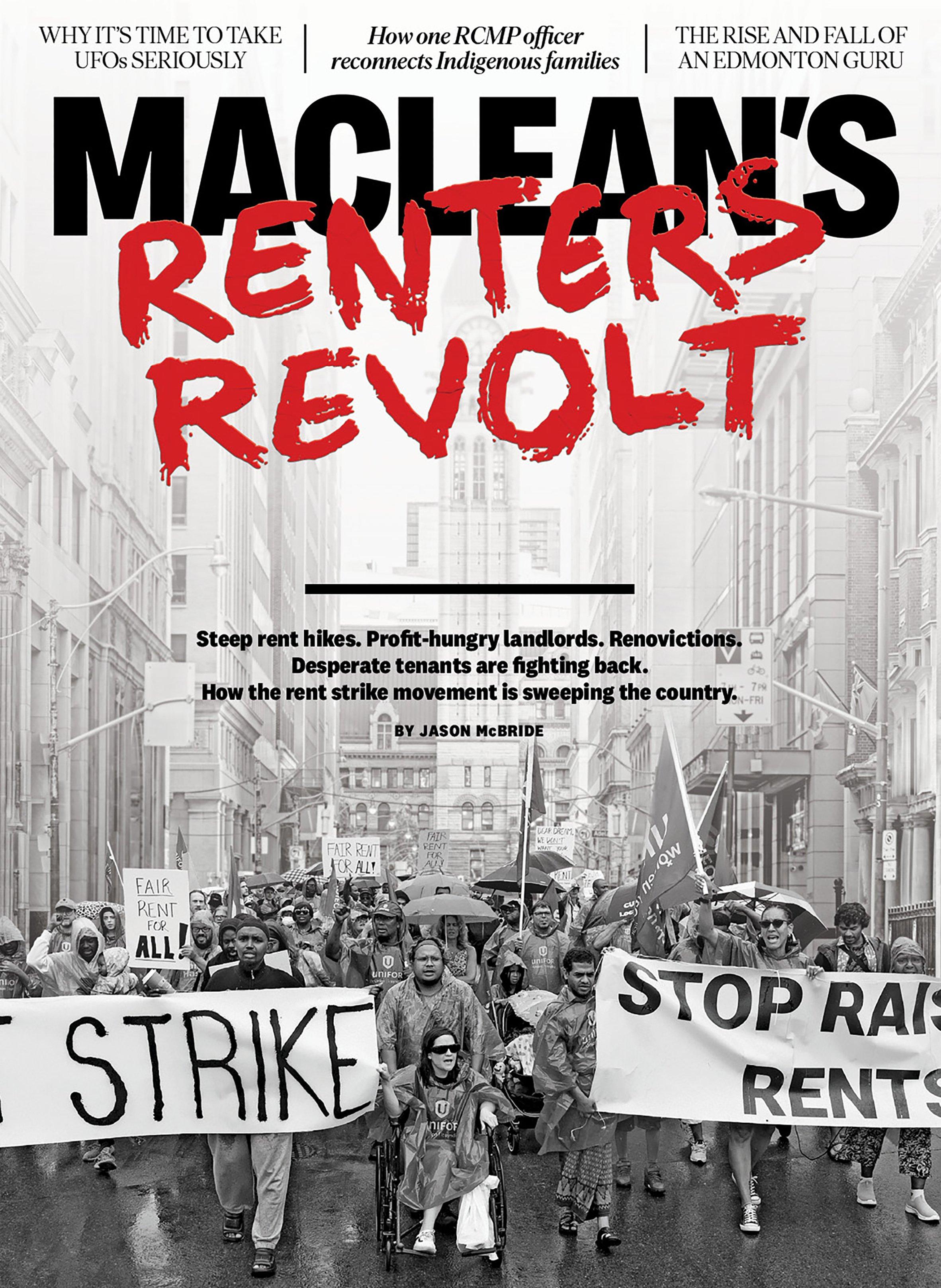
This article appears in the December 2023 print issue of Maclean’s magazine. You can purchase the issue here, or become a Maclean’s subscriber here.
